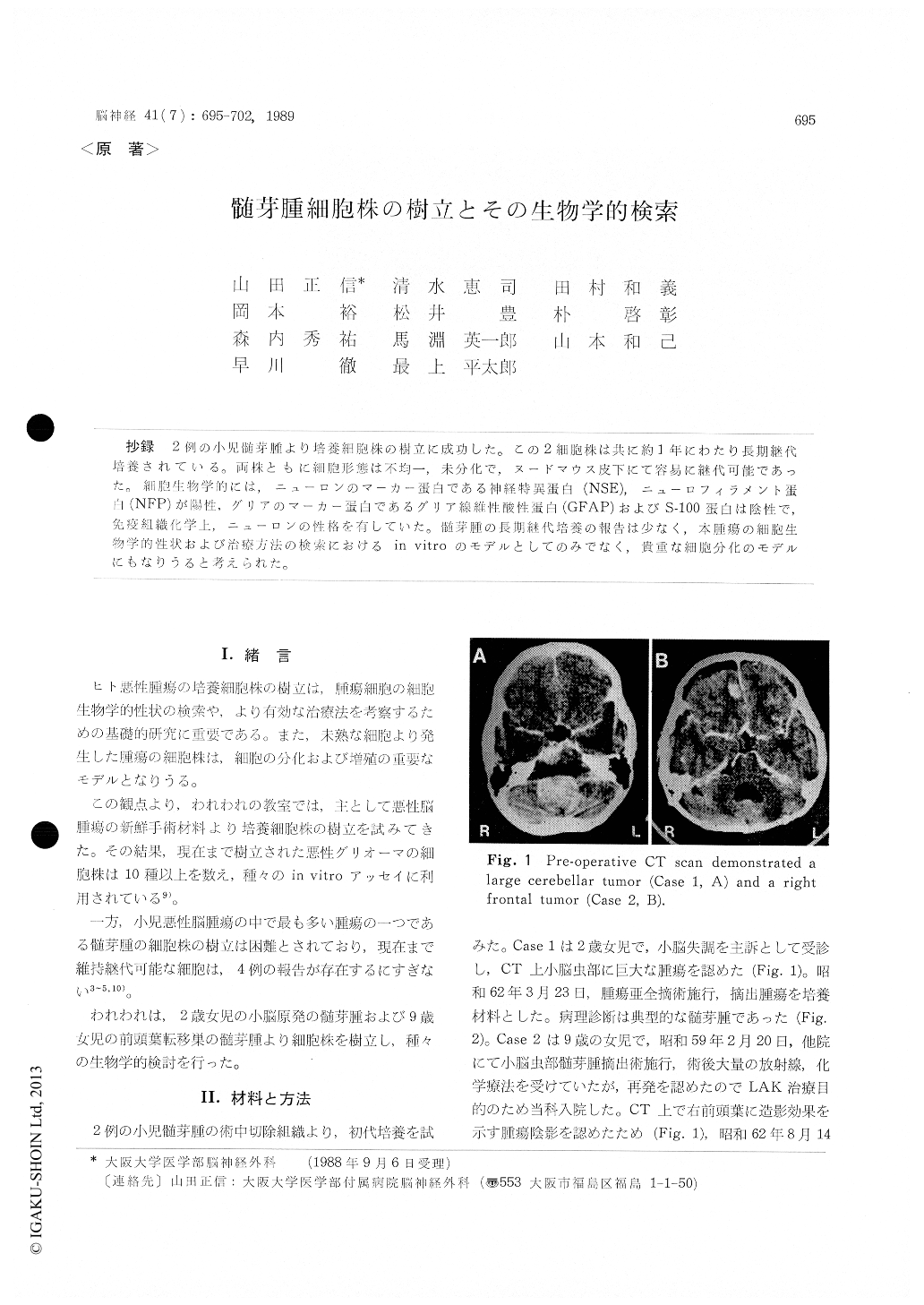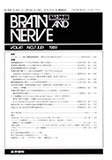Japanese
English
- 有料閲覧
- Abstract 文献概要
- 1ページ目 Look Inside
抄録 2例の小児髄芽腫より培養細胞株の樹立に成功した。この2細胞株は共に約1年にわたり長期継代培養されている。両株ともに細胞形態は不均一,未分化で,ヌードマウス皮下にて容易に継代可能であった。細胞生物学的には,ニューロンのマーカー蛋白である神経特異蛋白(NSE),ニューロフィラメント蛋自(NFP)が陽性,グリアのマーカー蛋白であるグリア線維性酸性蛋白(GFAP)およびS−100蛋白は陰性で,免疫組織化学上,ニューロンの性格を有していた。髄芽腫の長期継代培養の報告は少なく,本腫瘍の細胞生物学的性状および治療方法の検索におけるin vitroのモデルとしてのみでなく,貴重な細胞分化のモデルにもなりうると考えられた。
Two cell lines of human medulloblastoma (ONS-76 and ONS-81) were established, and their bio-logical characteristics were investigated.
The cell line, ONS-76, was established from a tumor specimens obtained from a large cerebeller tumor of a 2-year-old girl. The pathological diag-nosis was a typical medulloblastoma. The other cell line, ONS-81, was derived from a metastatic tumor in right frontal lobe of a 9-year-old girl. The tumor specimens were minced into fragments approximately 1 mm in diameter and cultured in plastic culture flasks in RPMI 1640 medium sup-plemented with 10% heat-inactivated fetal calf serum (FCS) and 50% patients serum. The cells growing as a monolayer were subcultured in RPMI 1640 supplemented with 10% FCS and initially with L-glutamine, sodium pyruvate, and non-essential amino acid. Microscopically, both cul-tured cells exhibited various morphological ap-pearances, and this morphological heterogeneity seemed to be specific for medulloblastoma cells. The in vitro population doubling time of ONS-76 and ONS-81 were 18.6 and 19.2 hr, respectively. The ONS-76 and ONS-81 cells formed subcutaneous tumors in nude mice as serial transplantable xeno-graft, and these tumors had a microscopic ap-pearance similar to that of the original medul-loblastoma. Ultrastructurely, the cultured cells showed primitive, undifferentiated appearance, and no neuronal or glial structures were not seen.
Immunohistochemical studies showed that both cells expressed neuron-specific enolase (NSE) and neurofilament protein (NFP 200 K, 145 K), but glial fibrillary acidic protein (GFAP) and S-100 protein were not detected. The NFP immunore-activities of both cultured cells were demonstrated as abnormal perinuclear deposits. These immuno-histochemical properties were well coincident with that of other reported cell lines.
Until recently, only four cell lines (TE 671, Daoy, D 238 Med, D 341 Med) were reported in literatures. The reason why few permanent lines of medulloblastoma have been established despite the rapid tumor growth is unclear, but the recent improvement of culture system would it be pos-sible to establish many cell lines of medulloblasto-ma. In view of the heterogeneity of the neoplasm, the studies with many cell lines will be necessary for characterization of human medulloblastoma. These ONS-76 and ONS-81 cell lines would also provide an experimental model, and allow further analysis of the biological properties and therapeu-tic efficacy of the human medulloblastoma.

Copyright © 1989, Igaku-Shoin Ltd. All rights reserved.


